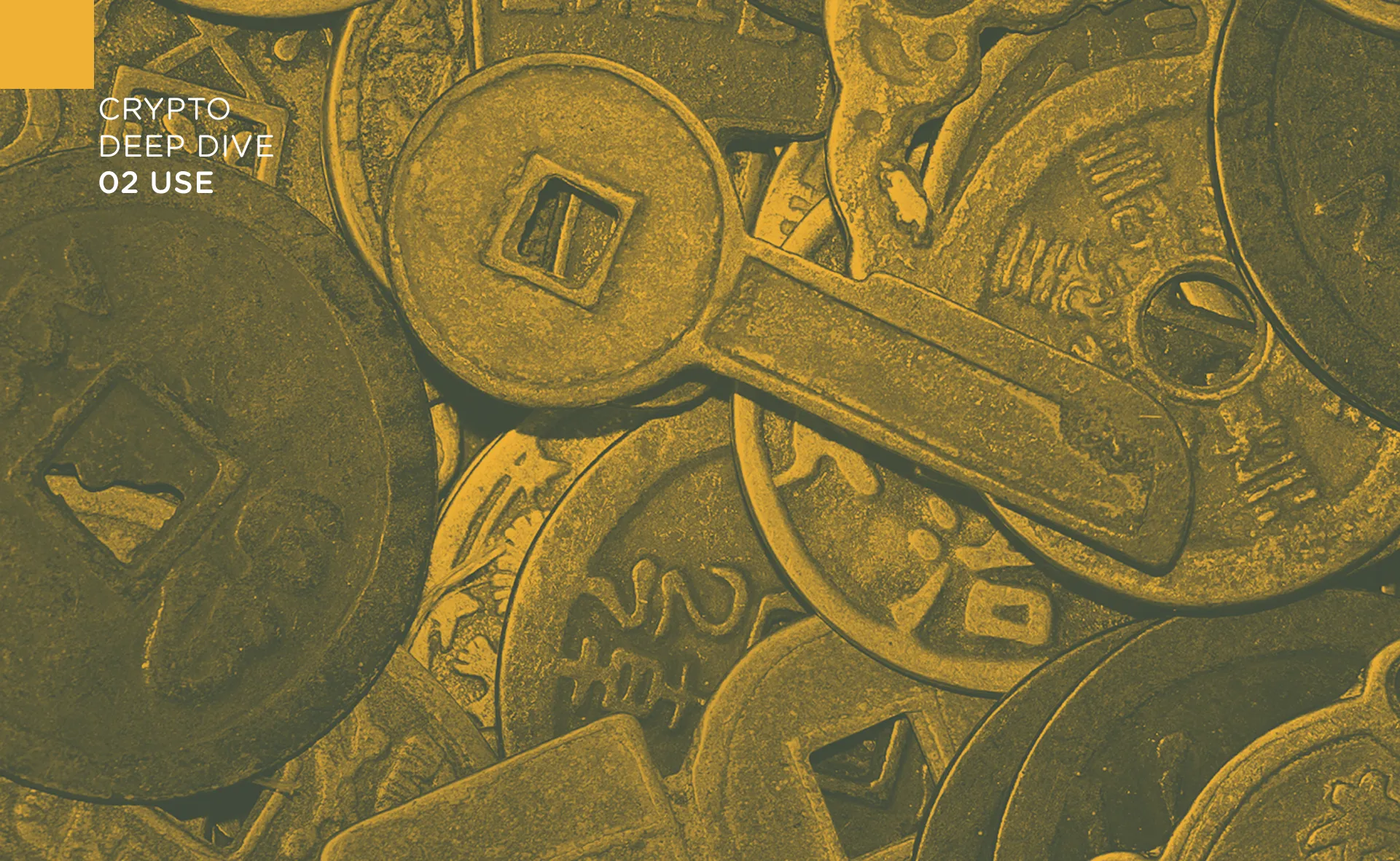Before money came into existence, trading was all we knew. Farmers in China traded their spades for food and other goods, and this continued up until a point where most spades were no longer used for digging, as they had shrunk down for convenience in being a medium of exchange. While the heavily abstracted spades had turned into something that resembled its former function, farmers were still able to connect it to the environment in which the trade was happening in; the farm. This makes us wonder, what are our contemporary spades? Are we experiencing the return of trade, made possible by digital tokens?
When systems go feral
Today, to ensure that societies receive their most basic needs, our markets have evolved into abstract processes of trading ‘spades’ for goods through logistical processes. Through globally connected supply chain processes, we can get a fair amount of products for a low price. Within such processes, there are two levels: An upper level (money) and a lower level (goods).
The upper level, in this sense, means that money (yuan, dollars, euro’s, yen) is circulated in order to make a logistically networked supply chain process possible, all around the globe. The lower level, refers to the process that physically takes place (the supply chain).
Money, of course, makes the world go round, and the rules of supply and demand - in conjunction with the free market - work for most capitalist systems on the ‘upper level’. This system makes modern capitalist societies run smoothly, and return vast amounts of capital, wages and happiness to everyone working in them.
But at the lower level of the network - the food creation & distribution process - it has become warped and is hurting our environment in several ways: Food miles are a common denominator to define the distance the food has travelled before it becomes available to us, and what the environmental implications of this process are. It will not come as a surprise to you that food miles have gone up in recent years.
Another negative development is that companies are monopolising industrial farming to sell the same products over and over again, and not to mention pesticide production.
By now, this whole network of food distribution and creation has become as wild and unpredictable as ever: one of our next natures. A way to mitigate the risk that these wild developments pose, is to close the circle within which the goods are traded.
Communities of strangers
A possible solution to this system growing out of control, is to break it up into smaller groups, each governed by the same ideas. And thus hybrid market models were born.
Now, there are many groups of people around the world that make ‘a spade’ from sharing. However, hovering above these communities are so-called sharing economy platforms, which essentially are capitalist companies that incentivize sharing. How to cope with that?
This is where peer-2-peer markets come in. We view the primary function of these markets as making it easy for buyers to find sellers and engage in convenient, trustworthy transactions - in turn, closing the loop.
Sharing economy platforms are non-existent in a P2P world. Both the upper and lower levels of trade are more directly connected in this new framework, as the middle-men in this process is left out. This market is therefore becoming more transparent, more manageable and more malleable. This leads to consumers feeling a sense of connection to their merchant.
P2P markets (or, communities of strangers) play an important role in these communities, as these are centered around a group of people interacting with one another - and actively adapting their behaviour according to the other party’s response.
A case study: POWER Ledger
POWER Ledger is an example of a platform that aims to make sustainable energy more widely and directly accessible. In order to achieve this goal, they make use of blockchain technology. So what happens when anyone can create their own electricity in say, 50 years?
A P2P marketplace (for any product) guarantees that there is always a possibility to do that. POWER Ledger does exactly this: connecting energy producers to energy consumers without the energy first going back and forth to the electric company.
Producing your own electricity is now possible through new products entering the market like home solar panels and batteries that can store the energy harvested from the sun. In fact, some houses create an actual surplus of energy that they simply don’t use.
With all this extra electricity, these households can make some money by selling this back to the electricity companies. That energy can be used elsewhere - say, at your neighbor's house who uses more electricity than you do. Wouldn’t it be great if you could cut out the middleman and simply sell your generated electricity to your neighbour?
Technically, of course, it’s not possible to create a fully peer-to-peer electricity network without any actual middle-men. There are laws and regulations that citizens and companies have to abide by. But could POWER Ledger signal the return of trading, though? What will the spade of the Chinese farmer become for these new energy markets?
POWER Ledger intends to create a peer-to-peer marketplace for people to buy and sell their renewable energy while still using established electricity and government networks to go about it. Up until now companies create these electricity networks and they sell their own products on there. But now there are essentially new networks forming where peers can share their goods directly, with the authority being in the network instead of the central service provider/business.
POWER ledger is an inspiring example of a company trying to reframe our relationship to energy by connecting packets of energy to their token. What might this look like for the ECO Coin? Can we connect ecological assets to a token to better balance ecology and economy?


Comments (0)
Share your thoughts and join the technology debate!
No comments yet
Be the first to share your thoughts!